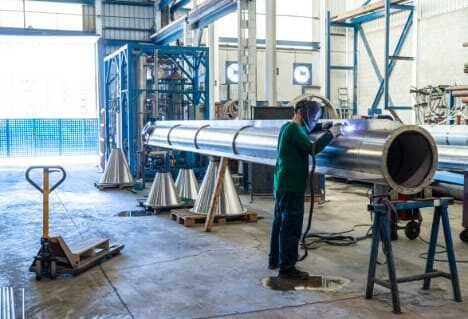Stainless steel welding is a critical process in various industries, including aerospace, automotive, and construction. However, achieving high-quality welds in stainless steel can be challenging due to its unique properties and susceptibility to burning during welding. This article explores effective strategies to weld stainless steel without causing it to burn, highlighting the importance of proper techniques and considerations.
I. Understanding Stainless Steel
Stainless steel is a corrosion-resistant alloy characterized by its high chromium content, which forms a passive oxide layer on the surface, protecting against rust and corrosion. Despite its exceptional properties, welding stainless steel presents several challenges, including distortion, sensitization, and the risk of burning.

II. Factors Contributing to Burning in Stainless Steel Welding
Several factors can contribute to the burning of stainless steel during welding:
High Heat Input: Excessive heat input during welding can cause localized overheating, leading to the formation of heat-affected zones and potential burning of the material.
Oxidation: Exposure to oxygen can result in the formation of oxides on the surface of the stainless steel, altering its properties and causing discoloration or burning during welding.
Contamination: The presence of contaminants such as oil, grease, or dirt on the surface of the stainless steel can lead to impurities in the weld, increasing the likelihood of burning.
Incorrect Shielding Gas: Inadequate shielding gas coverage or the use of improper gas mixtures can result in oxidation and burning of the stainless steel during welding.
III. How to Prevent Burning During Stainless Steel Welding?
1) Pre-Welding Preparations
Proper pre-welding preparations are essential for preventing burning in stainless steel welding:
Proper Cleaning and Surface Preparation: Thoroughly clean the surface of the stainless steel to remove any contaminants and ensure proper weld quality. Use methods such as solvent cleaning, mechanical cleaning, or pickling to achieve a clean surface.
Selection of Appropriate Welding Method and Equipment: Choose the appropriate welding method and equipment based on the specific requirements of the application. Consider factors such as material thickness, joint design, and accessibility when selecting the welding process.
Ensuring Adequate Shielding Gas Coverage: Use the appropriate shielding gas and flow rate to provide adequate protection against oxidation and ensure proper weld bead formation. Consider factors such as gas purity, flow rate, and nozzle size to optimize shielding gas coverage.
2) Welding Techniques to Prevent Burning
Implementing proper welding techniques is crucial for preventing burning in stainless steel welding:
Use of Low Heat Input Processes: Choose welding processes with low heat input, such as gas tungsten arc welding (GTAW) or pulsed gas metal arc welding (GMAW-P), to minimize the risk of overheating and burning of the stainless steel.
Controlled Welding Parameters: Maintain control over welding parameters such as current, voltage, and travel speed to prevent excessive heat input and ensure consistent weld quality. Monitor parameters closely and make adjustments as needed to achieve optimal results.
Back Purging: Employ back purging techniques to protect the backside of the weld from oxidation and contamination. Use inert gas, such as argon or helium, to create a protective atmosphere inside the welding cavity and prevent the burning of the stainless steel.
Employing Pulse Welding Techniques: Utilize pulse welding techniques to control heat input and minimize the risk of burning in stainless steel welding. Pulse welding allows for precise control over the weld puddle and reduces the likelihood of overheating.
3) Selection of Consumables
Careful selection of consumables is essential for preventing burning in stainless steel welding:
Choosing the Right Filler Metal: Select the appropriate filler metal based on the composition of the stainless steel and the requirements of the application. Choose filler metals with low carbon content to minimize the risk of sensitization and burning.
Selection of Appropriate Shielding Gas: Choose the appropriate shielding gas for the specific stainless steel grade and welding process. Consider factors such as gas purity, composition, and flow rate to optimize shielding gas coverage and prevent oxidation.
Utilizing Flux-Cored Wires for Specific Applications: Consider using flux-cored wires for stainless steel welding applications that require higher deposition rates or increased productivity. Flux-cored wires offer improved weld penetration and slag removal, reducing the risk of burning and ensuring high-quality welds.
4) Post-Welding Practices
Implementing proper post-welding practices is essential for maintaining the integrity of stainless steel welds:
Removal of Discoloration and Heat Tint: Remove any discoloration or heat tint from the surface of the weld using mechanical or chemical methods. Avoid aggressive cleaning techniques that may damage the passive oxide layer and compromise corrosion resistance.
Inspection for Defects: Conduct thorough inspections of the weld for defects such as cracks, porosity, or incomplete fusion. Use non-destructive testing methods such as visual inspection, dye penetrant testing, or radiographic testing to ensure weld quality and integrity.
Heat Treatment Considerations: Consider post-weld heat treatment processes such as annealing or solution heat treatment to relieve residual stresses and improve the mechanical properties of the stainless steel weld. Follow recommended procedures and temperature ranges to prevent overheating and burning of the material.
IV. Conclusion
In conclusion, welding stainless steel without causing it to burn requires careful consideration of various factors, including material properties, welding techniques, and consumable selection. By understanding the challenges associated with stainless steel welding and implementing appropriate preventive measures, welders can achieve high-quality welds with minimal risk of burning or defects. Proper pre-welding preparations, controlled welding techniques, selection of suitable consumables, and adherence to post-welding practices are essential for ensuring the integrity and performance of stainless steel welds in diverse applications.
Related articles:
1. Welding Stainless Steel Guide: Welding Processes & Welding Tips
2. Pulsed MIG Welding Aluminum and Stainless Steel
3. Why Does Stainless Steel Rust After Welding?
4. Stainless Steel Welding: What is it, Benefits, & Methods
5. Stainless Steel Weld Cleaning: A Complete Guide to Methods & Techniques




